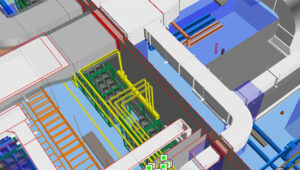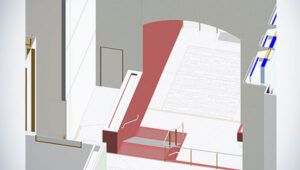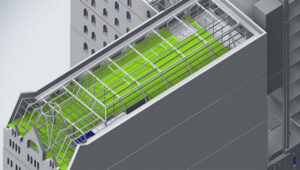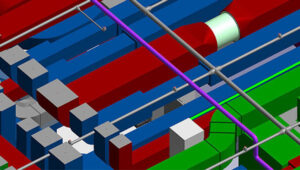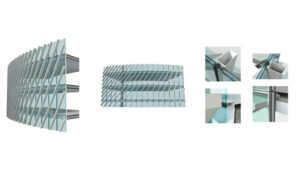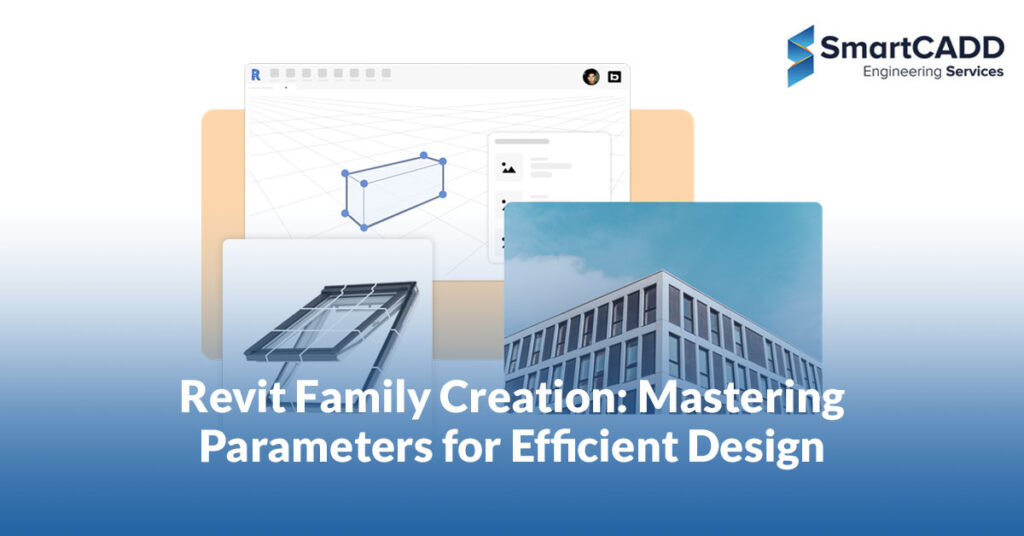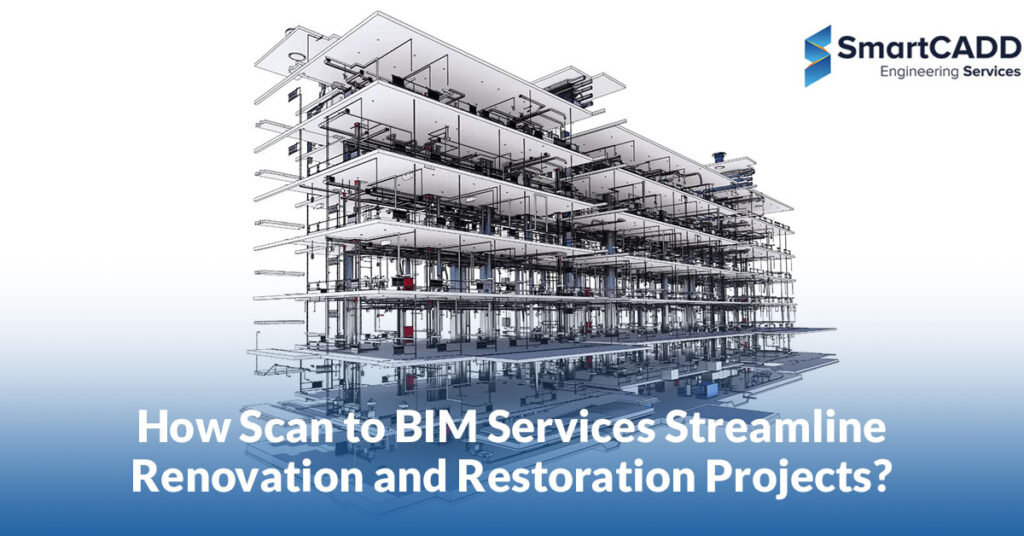In architectural design, efficiency and precision are paramount. Revit family creation stands as a cornerstone of modern building information modeling (BIM), offering unparalleled control and customization through the use of parameters. This article looks at the art and science of utilizing parameters within Revit to streamline and enhance the design process, ensuring every architectural element is both functional and flawlessly integrated.
The Foundation of Revit Family Creation
At the core of every Revit model lies the family – the building blocks of your design. Revit family creation is a meticulous process, where each element is crafted with parameters that dictate its behaviour and appearance. Understanding this foundation is crucial for anyone looking to leverage Revit for architectural design.
What are Revit Families?
- Revit families are the graphical representations of building components. They are the DNA of your architectural model, containing all the geometric information and attributes necessary for the component they represent.
Key Elements to Master in Family Creation:
- Geometry Control: Learn how parameters shape and control the geometry of the family, allowing for dynamic changes.
- Behavioural Properties: Understand how to embed behavioural characteristics into families, making them react appropriately to changes in the environment or design.
- Detail Levels: Know how to create families that adapt their level of detail based on the view, ensuring efficient performance and clarity.
Tips for Efficient Family Creation:
- Start Simple: Begin with the most basic version of the component and gradually add complexity as needed.
- Use Templates: Leverage existing templates as a starting point to ensure consistency and save time.
- Test Frequently: Regularly test families in a project environment to ensure they perform as expected.
Navigating the World of Parameters
Parameters are what make Revit families intelligent. They are the settings that determine how families look and behave. But with great power comes great responsibility. Understanding how to effectively use parameters is key to creating versatile and efficient designs.
Types of Parameters:
- Type vs. Instance: Distinguish between type parameters (common to all family instances) and instance parameters (unique to each instance).
- Built-in vs. Custom: Know when to use built-in parameters provided by Revit and when to create your own custom parameters for specific needs.
Strategies for Parameter Management:
- Organise and Name Wisely: Keep parameters organised and clearly named for easy identification and manipulation.
- Limit Quantity: Only use as many parameters as necessary to avoid overcomplicating the family and affecting performance.
- Use Formulas: Implement formulas to create relationships between parameters, enhancing the dynamic capabilities of your families.
Common Pitfalls and How to Avoid Them:
- Overparameterization: Avoid adding unnecessary parameters that can bloat the family and slow down the project.
- Inconsistent Naming Conventions: Use consistent naming to avoid confusion and errors during the design process.
Advanced Techniques in Parameter Utilization
Moving beyond the basics, let’s explore the advanced techniques that can truly elevate your Revit family creation. These methods allow for more sophisticated and nuanced control over your designs, enabling a higher level of customization and functionality. For those involved in MEP revit family creation, the specificity and accuracy of parameters become even more critical, directly impacting the functionality and integration of mechanical, electrical, and plumbing systems within the broader building model.
Harnessing the Power of Formulas:
- Discover how to use formulas to create smart, responsive families that adjust according to design needs.
- Learn about conditional statements and how they can introduce intelligent behaviour into your families.
Implementing Shared Parameters:
- Understand the benefits of shared parameters for ensuring consistency and facilitating data management across multiple families and projects.
- Explore how shared parameters can be used for schedules, tags, and filtering.
Nested Families and Visibility Controls:
- Delve into the world of nested families for complex assemblies and discover how they can streamline the creation process.
- Master visibility controls to ensure that your families display correctly in different views and detail levels.
Streamlining Workflow with Parameter Best Practices
Effective use of parameters not only enhances the design but also optimises the workflow, ensuring that projects progress smoothly and efficiently. This section will discuss best practices for parameter management in Revit family creation, providing a blueprint for streamlined and error-free design workflows.
Efficient Parameter Usage:
- Logical Grouping: Organise parameters into logical groups for easier navigation and manipulation.
- Consistency Across Families: Maintain parameter consistency across different families to simplify the process for users and ensure uniformity.
Parameter Documentation:
- Clear Documentation: Keep a detailed record of all parameters used, including their purpose and any specific instructions or considerations. This documentation is invaluable for future reference and for other team members who may use the family.
Performance Optimization:
- Evaluate Impact: Regularly evaluate the impact of parameters on model performance and adjust as necessary.
- Balance Detail and Performance: Strive for a balance between the level of detail and the overall performance of the model, ensuring that families are as lightweight as possible without sacrificing necessary functionality.
Real-Time Example – Custom Door Family Creation
To illustrate the concepts discussed, let’s walk through a real-time example of creating a custom door family in Revit, demonstrating how parameters can significantly enhance both the design and functionality of a model.
Project Overview:
- Client Requirements: A client needs a series of custom doors for a commercial building, each with different sizes, materials, and opening mechanisms.
- Design Objectives: The doors must be easily adjustable, aesthetically pleasing, and fit within the specific constraints of the building.
Step-by-Step Creation Process:
- Setting Up: Start by setting the basic geometry and dimensions based on the most common door type.
- Adding Parameters: Introduce parameters for dimensions, materials, and opening mechanisms, allowing each aspect of the door to be adjusted as needed.
- Testing and Refinement: Test the door in various scenarios and refine the parameters based on performance and aesthetics.
- Documentation and Sharing: Document the parameters and any specific instructions for use, and then share the family with the team or client for implementation.
Outcome and Benefits:
- Efficiency: The custom door family can be quickly adjusted for different situations, saving time and reducing errors.
- Consistency: With a single, well-designed family, all doors maintain a consistent quality and style.
- Flexibility: The doors can be adapted for future changes or different projects, demonstrating the power of well-crafted parameters in Revit family creation.
Future Trends and Innovations in Family Creation
Innovation never stops in the world of Revit family creation services. Professionals constantly seek ways to enhance accuracy, reduce time, and facilitate more seamless integration of these components into the larger BIM project.
Technological Advances:
- Artificial Intelligence: AI is set to streamline routine tasks, enhancing efficiency and allowing more focus on complex design elements.
- Virtual Reality: VR and AR technologies will transform client presentations and design interactions, offering immersive experiences and real-time modifications.
Sustainable and Smart Design:
- Eco-Friendly Options: Expect more detailed eco-conscious materials and designs in Revit families, aligning with global sustainability goals.
- Smart Buildings: Revit families will evolve to interact seamlessly with smart building technologies, ensuring designs are both innovative and functional.
Wrapping Up: Leading the Way with SmartCADD
In conclusion, mastering parameters in Revit family creation is key to pushing the boundaries of architectural design, and leading this charge is SmartCADD. With a commitment to innovation and excellence, SmartCADD stands out as a leader in providing cutting-edge BIM and CAD services. From architectural modelling to detailed MEP systems, SmartCADD leverages the latest in technology and design thinking to deliver solutions that are not just efficient and accurate but are also sustainable and forward-thinking. Whether you’re looking to optimise your current practices or explore the latest trends in BIM, SmartCADD is your partner in navigating the ever-evolving world of architectural design and construction.
FAQS
Revit Family Creation involves building custom components for architectural modeling in Autodesk Revit.
Efficient design relies on understanding and controlling parameters, ensuring flexibility and adaptability in your models.
Architects, designers, and anyone using Revit seeking to enhance their skills in family creation for more efficient designs.

